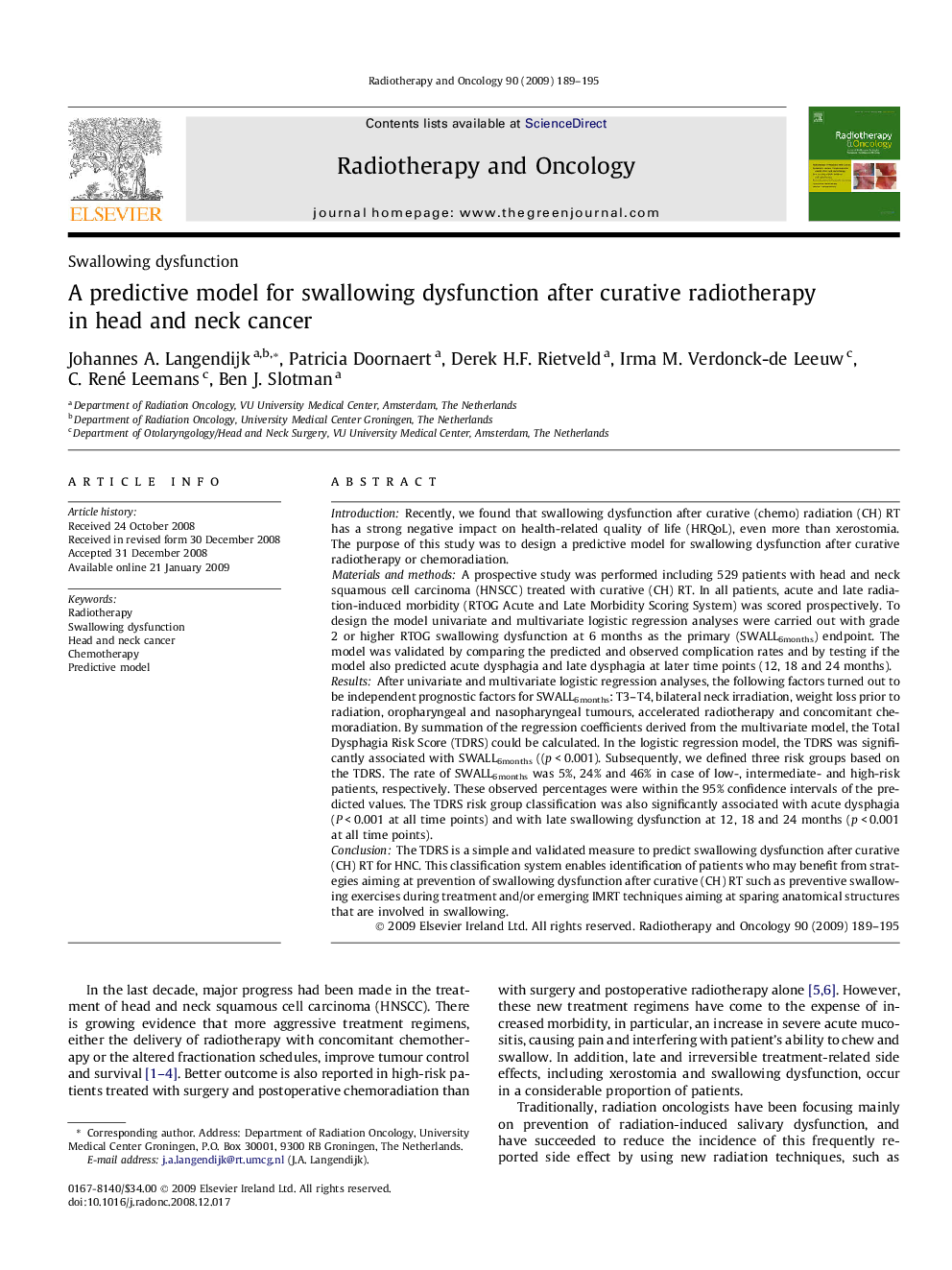| کد مقاله | کد نشریه | سال انتشار | مقاله انگلیسی | نسخه تمام متن |
|---|---|---|---|---|
| 2160117 | 1090872 | 2009 | 7 صفحه PDF | دانلود رایگان |

IntroductionRecently, we found that swallowing dysfunction after curative (chemo) radiation (CH) RT has a strong negative impact on health-related quality of life (HRQoL), even more than xerostomia. The purpose of this study was to design a predictive model for swallowing dysfunction after curative radiotherapy or chemoradiation.Materials and methodsA prospective study was performed including 529 patients with head and neck squamous cell carcinoma (HNSCC) treated with curative (CH) RT. In all patients, acute and late radiation-induced morbidity (RTOG Acute and Late Morbidity Scoring System) was scored prospectively. To design the model univariate and multivariate logistic regression analyses were carried out with grade 2 or higher RTOG swallowing dysfunction at 6 months as the primary (SWALL6months) endpoint. The model was validated by comparing the predicted and observed complication rates and by testing if the model also predicted acute dysphagia and late dysphagia at later time points (12, 18 and 24 months).ResultsAfter univariate and multivariate logistic regression analyses, the following factors turned out to be independent prognostic factors for SWALL6months: T3–T4, bilateral neck irradiation, weight loss prior to radiation, oropharyngeal and nasopharyngeal tumours, accelerated radiotherapy and concomitant chemoradiation. By summation of the regression coefficients derived from the multivariate model, the Total Dysphagia Risk Score (TDRS) could be calculated. In the logistic regression model, the TDRS was significantly associated with SWALL6months ((p < 0.001). Subsequently, we defined three risk groups based on the TDRS. The rate of SWALL6months was 5%, 24% and 46% in case of low-, intermediate- and high-risk patients, respectively. These observed percentages were within the 95% confidence intervals of the predicted values. The TDRS risk group classification was also significantly associated with acute dysphagia (P < 0.001 at all time points) and with late swallowing dysfunction at 12, 18 and 24 months (p < 0.001 at all time points).ConclusionThe TDRS is a simple and validated measure to predict swallowing dysfunction after curative (CH) RT for HNC. This classification system enables identification of patients who may benefit from strategies aiming at prevention of swallowing dysfunction after curative (CH) RT such as preventive swallowing exercises during treatment and/or emerging IMRT techniques aiming at sparing anatomical structures that are involved in swallowing.
Journal: Radiotherapy and Oncology - Volume 90, Issue 2, February 2009, Pages 189–195